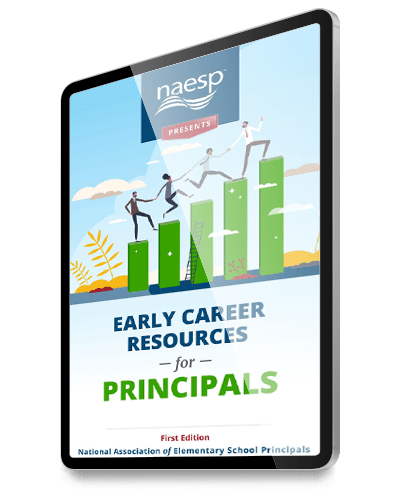
A Principal’s Influence Goes Well Beyond Academics
The Early Career Resources for Principals ebook is intended to help those new to the principalship embrace, adapt to, and excel in the role.
Topics: Early Career Principals
A landmark 2021 research synthesis commissioned by The Wallace Foundation, “How Principals Affect Students and Schools,” says that the impact of an effective school leader has been greatly underestimated in years past. And while a teacher might have a significant impact on a few dozen students at a time, the principal affects the performance of the entire school.
Crunching the numbers on six studies involving more than 22,000 principals, the report found that a single standard deviation increase in principal effectiveness delivered comparable increases in student achievement. For comparison’s sake, this means that students in a school with an above-average principal get the benefit of almost three more months of learning every year than they would in a school led by a below-average principal.
As the building leader, the principal’s influence goes well beyond academic achievement. Some principals are more effective at reducing absenteeism, some are better at retaining teachers, and some are better at creating alternatives to exclusionary discipline. Supervisor and teacher ratings of principal effectiveness are excellent predictors of student achievement and other outcomes.
“Principals really matter,” the review says. “It is difficult to envision an investment in K–12 education with a higher ceiling on its potential return than improving school leadership.”
3 Bucket Areas of Leadership
Effective principals build a productive school climate, facilitate collaboration, guide teachers on instruction, and manage school personnel and resources strategically. Such skills fall into three “buckets,” the report says: People (human development and relationship skills), Instruction (skills to support teachers and classroom instruction), and Organization (management skills such as planning, budgeting, data use, and resource allocation).
Most new principals have had substantial amounts of training and preparation to take on the building leadership role as assistant principals, through formal pipeline programs, or through specialized education. But longtime administrators agree that there’s nothing that can prepare a person completely to take the reins as a building leader; some experiences will always need to be navigated on-the-job and in the moment. Complicating the process is that the principalship is a complex role that continues to evolve, and the person in it must evolve with it.
Resources and Advice for New Principals
Culled from NAESP’s vast archive of professional resources, the ebook Early Career Resources for Principals is intended to help those new to the principalship embrace, adapt to, and excel in the role. Focusing on skills development, it offers a primer on the principalship and some of its major responsibilities, as well as practical advice on some of the position’s most salient challenges.
It looks at the realities of the principal’s role and where to look for opportunities when you’re new to it, as well as advice on delegating tasks and attending to your own well-being. You’ll hear how to build empowering, supportive relationships with other administrators, teachers, staff, students, and parents. You’ll find resources and advice on leading a curriculum and dispensing discipline equitably, alongside practical advice on budgeting and assessments. And finally, you’ll access advice on finding the support and resources you need to continue your own development as a leader.
No written compendium can completely anticipate the day-to-day challenges a new principal will face. But armed with the knowledge inside this ebook, more principals might ultimately realize the kinds of schoolwide impacts research identifies and have more triumphs to celebrate.
Kaylen Tucker is associate executive director, Communications, at NAESP and editor in chief of Principal magazine.
This article was originally published as the Foreword to Early Career Resources for Principals.

Download Early Career Resources for Principals

